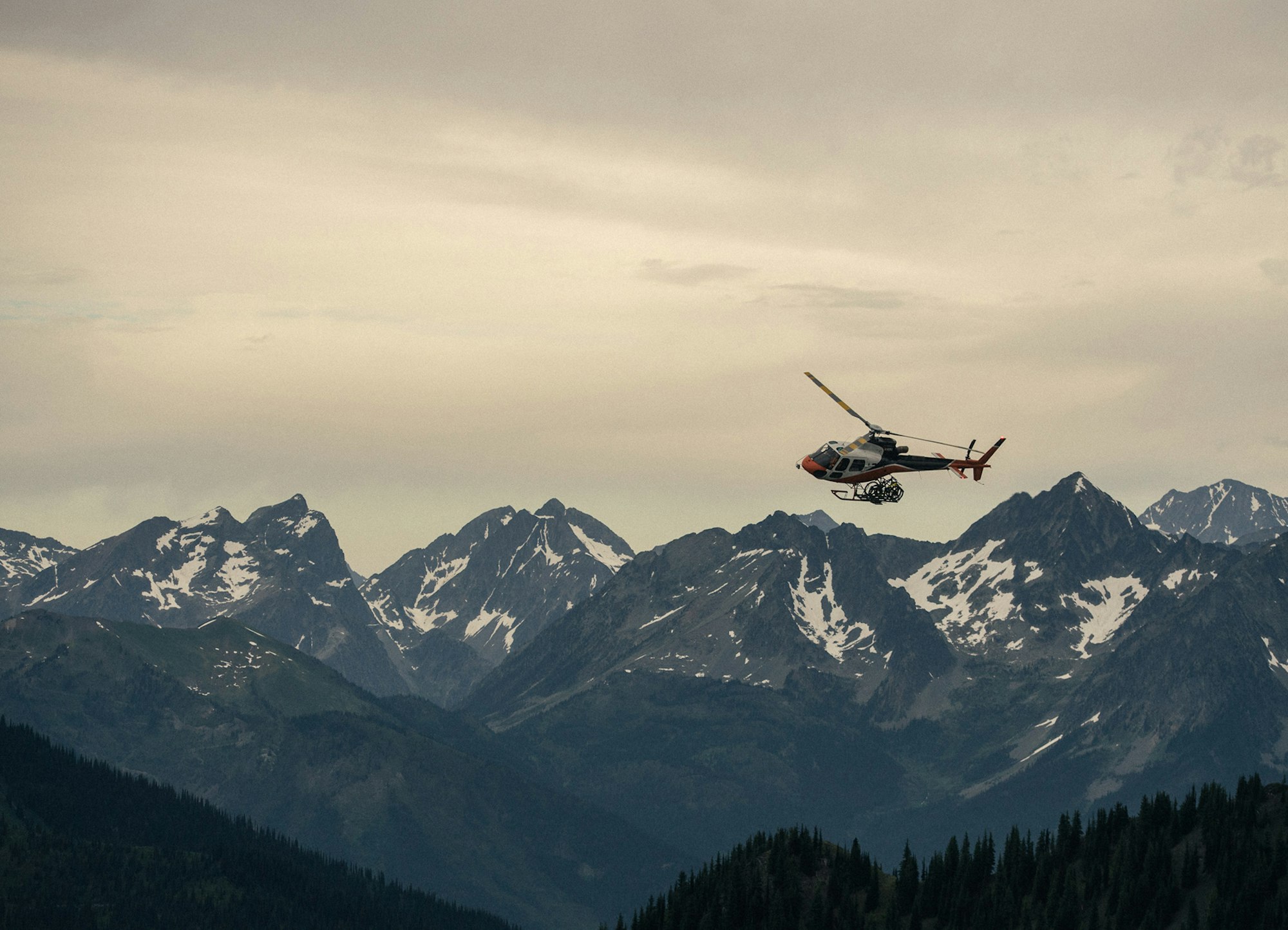How hard is it to turn a winter ski operation into a summer gravity park?
WORDS & PHOTOS • Lily Krass (unless otherwise noted)
Crouching face down in the dirt next to my bike, I brace myself for the blast as the helicopter takes off. It’s a familiar scene—the roar of the rotors, a no-nonsense safety briefing from the pilot and an isolated peak with thousands of feet to descend—all that’s missing is the snow.
This summer, Whisper Ridge Utah became the first operation in the Lower 48 to load up their helicopters with mountain bikes, sending riders down brand new high-country trails on their private tenure in the northern Wasatch Mountains. “We only just started building trails on June 14th,” said Eli Harik, Director of Mountain Biking at Whisper Ridge. “It’s definitely the start of something big.”
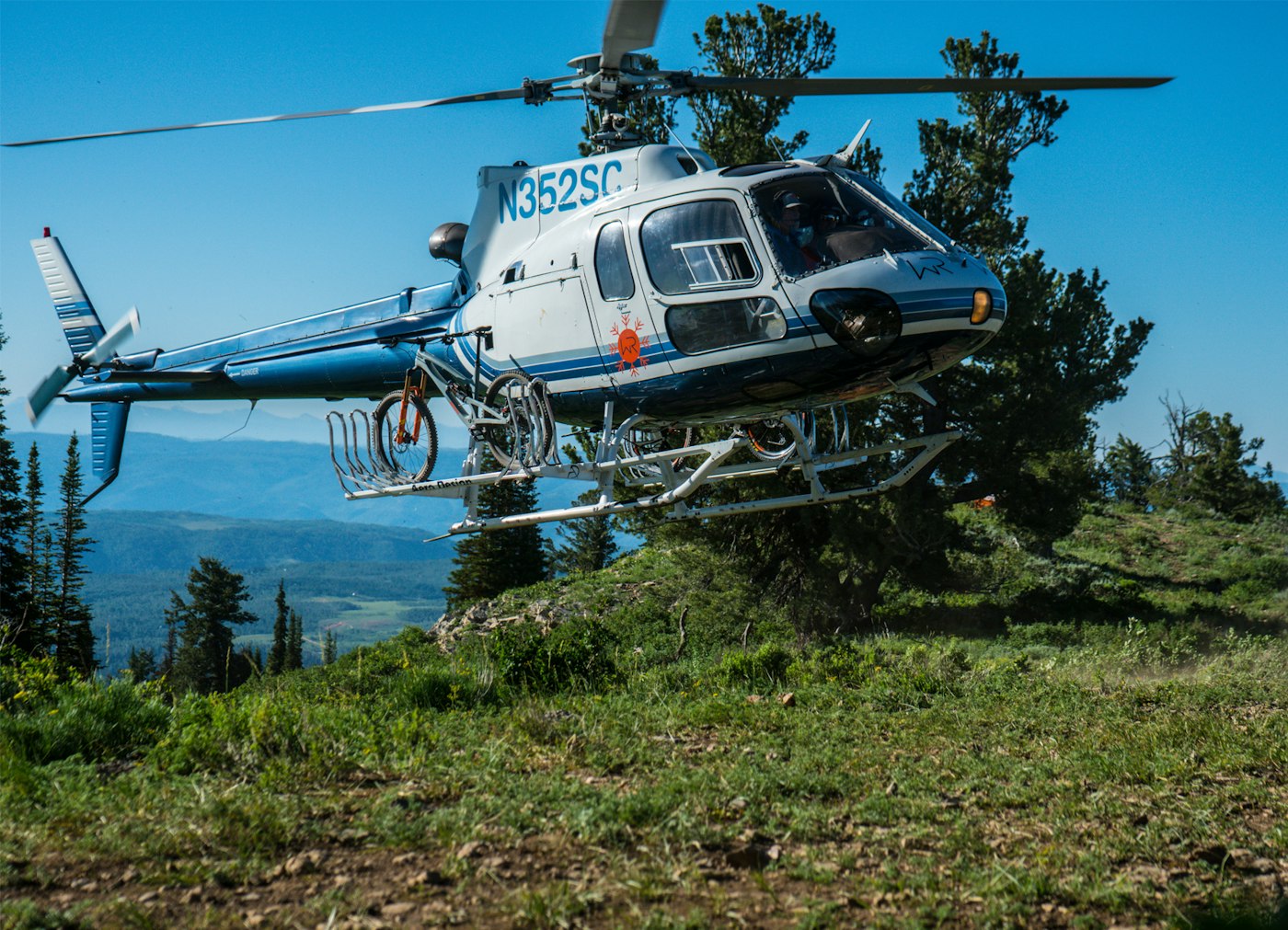
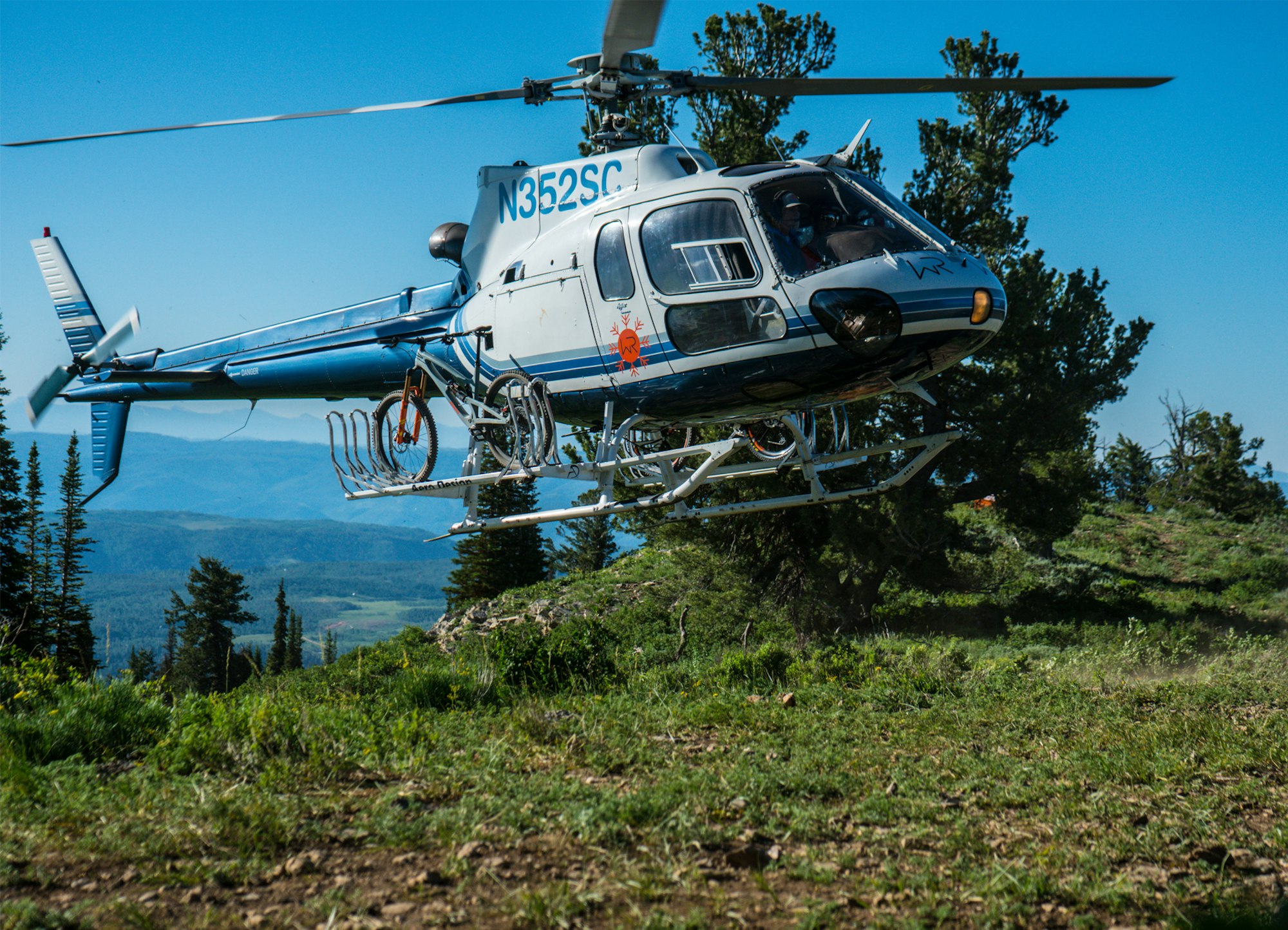
More than ever before, heli-skiing operations are offering downhill mountain biking in the off-season.
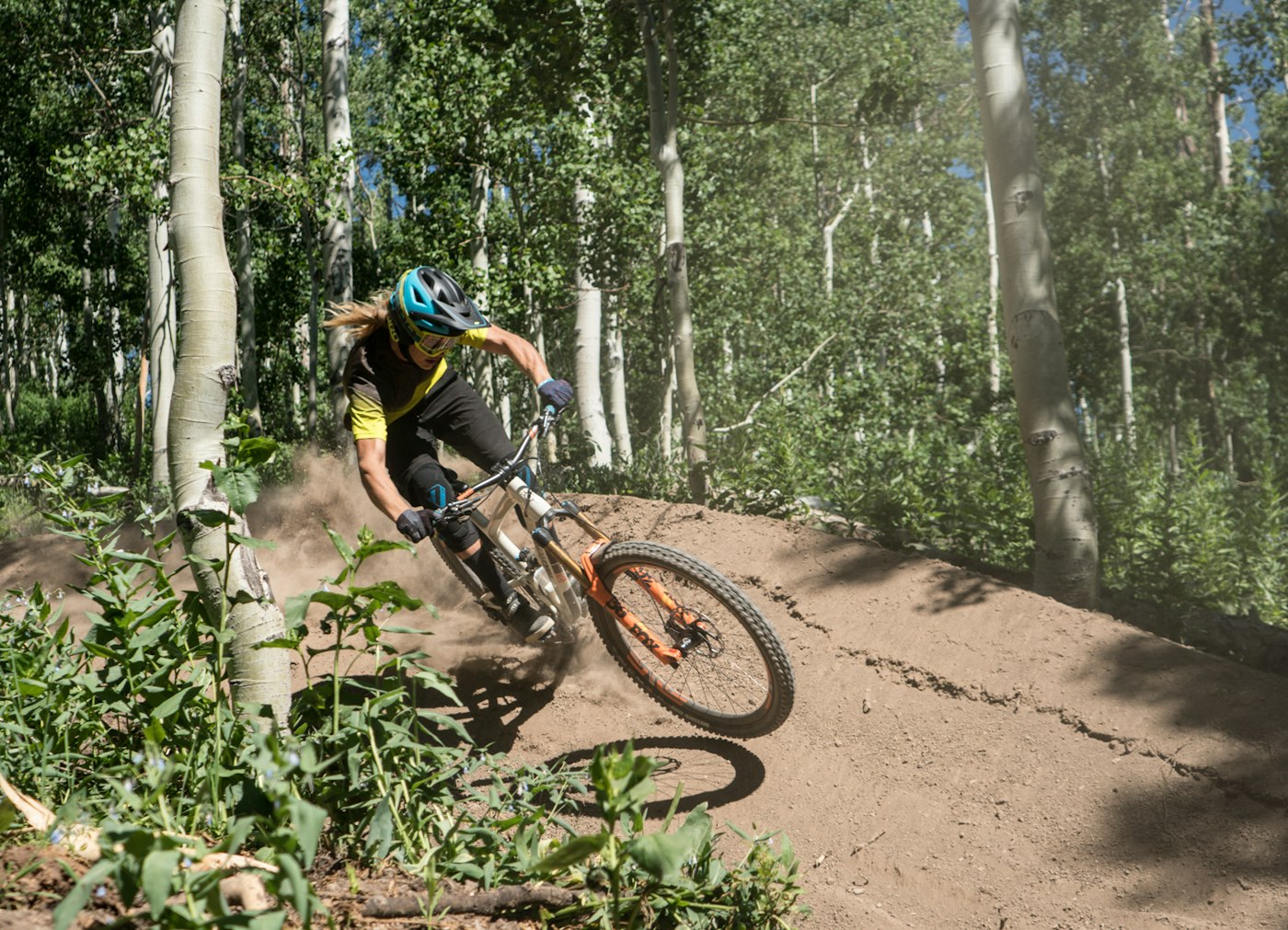
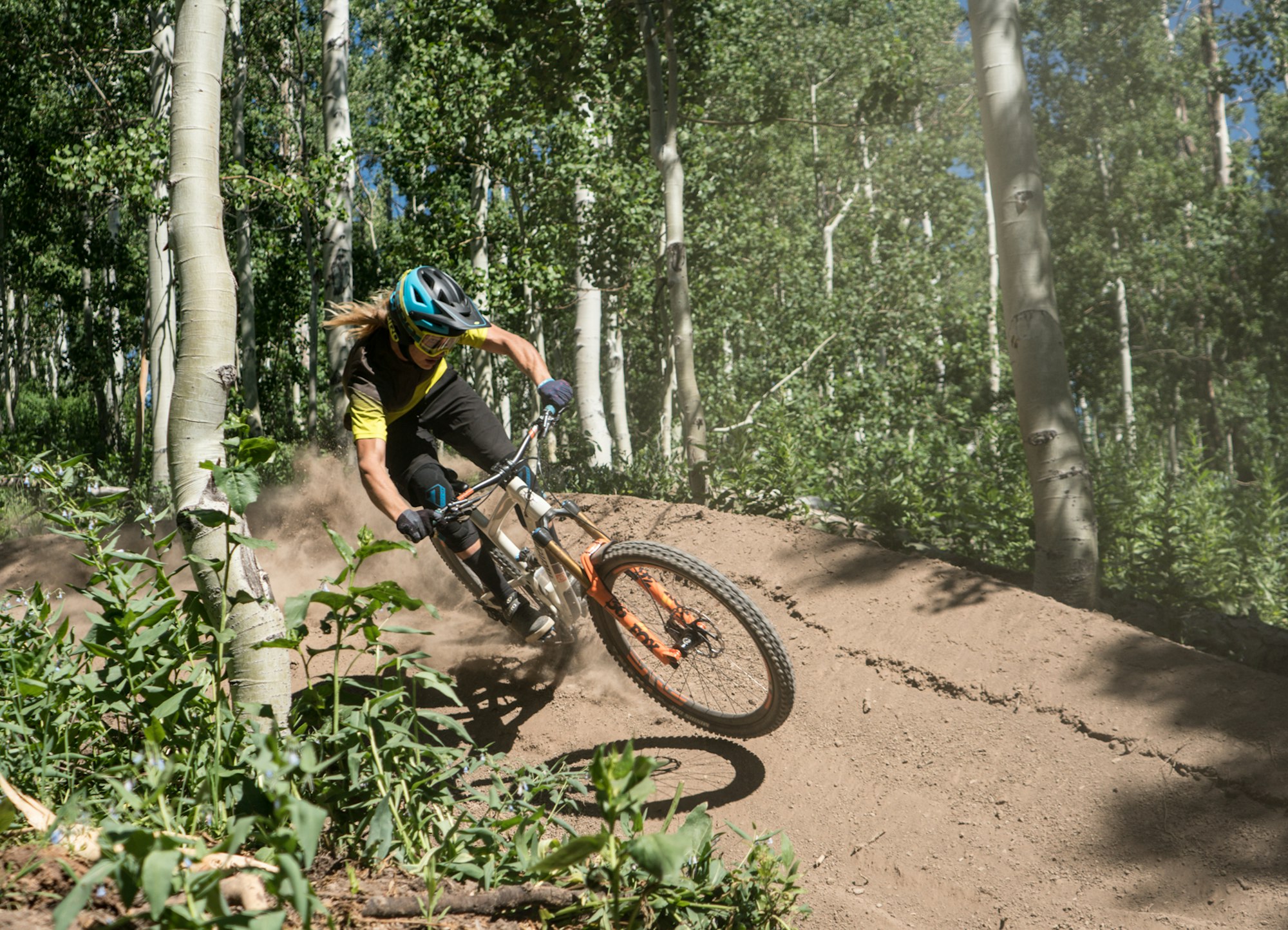
Athlete Cody Kelly making the most of the terrain at Whisper Ridge Utah.
The roots of heli-biking are in New Zealand, where it’s been a staple of summer action sports recreation for the last decade and it’s slowly begun to trickle over to North America in the last few years as a way for heli operations to create a consistent summer clientele and make use of the land and helicopters that their staff is already trained to guide on. “We wanted a summer sport that fit the vibe of our skiing and snowboarding operation,” said Mike Kinrade, manager of Retallack Lodge outside of Nelson, British Columbia, “Mountain biking was a pretty natural choice.”
Retallack first started flying bikes in 2014 when not many other operations in North America had even thought of it. Their premier heli drop is a 6,000-foot descent off of Reco Mountain in the West Kootenays, one of the longest continuous mountain bike descents in the world that blasts down alpine ridgelines, root tech and through dreamy flow sections. “We were one of the first in B.C. so we didn’t have any guidelines to follow. We were pretty much tasked with setting a new standard,” explained Kinrade of their process in getting a full summer bike park off the ground.
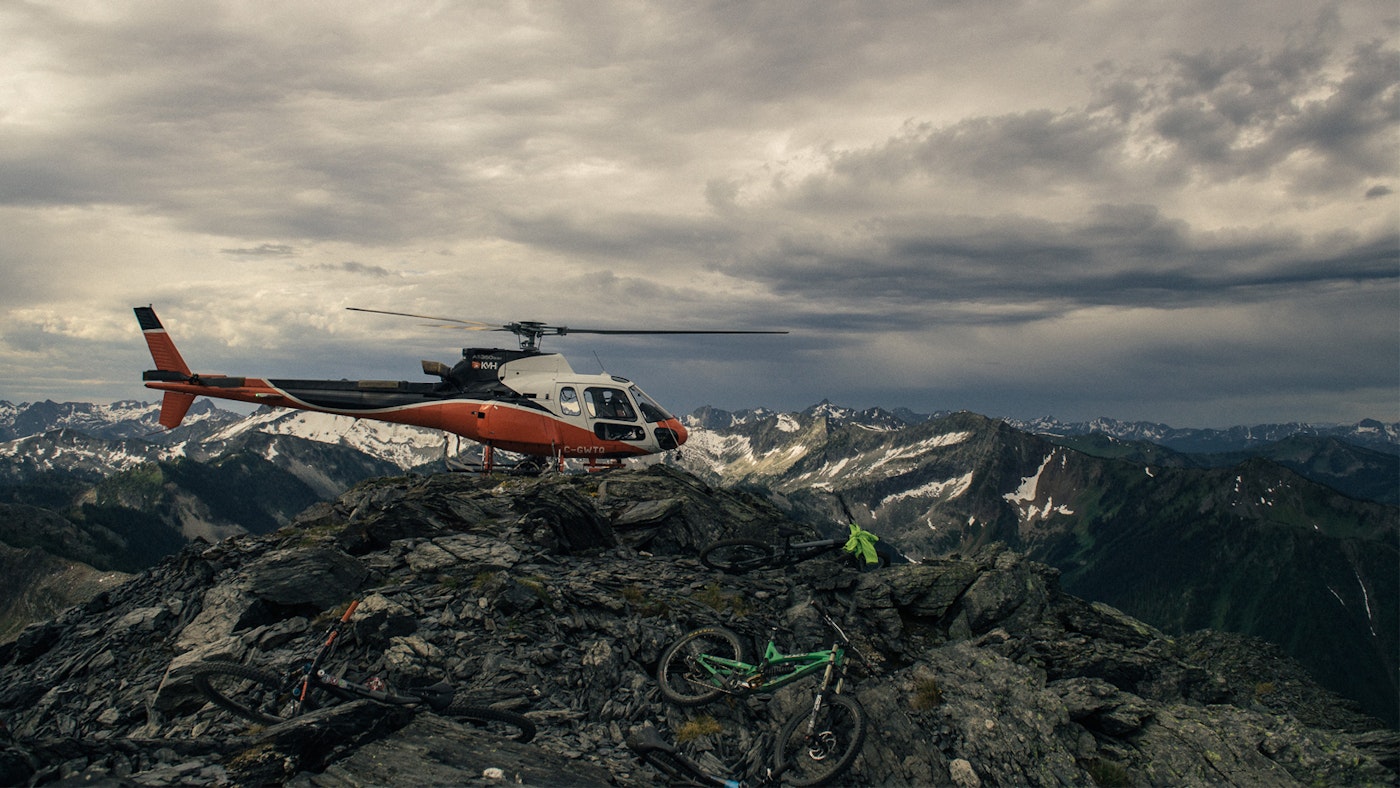
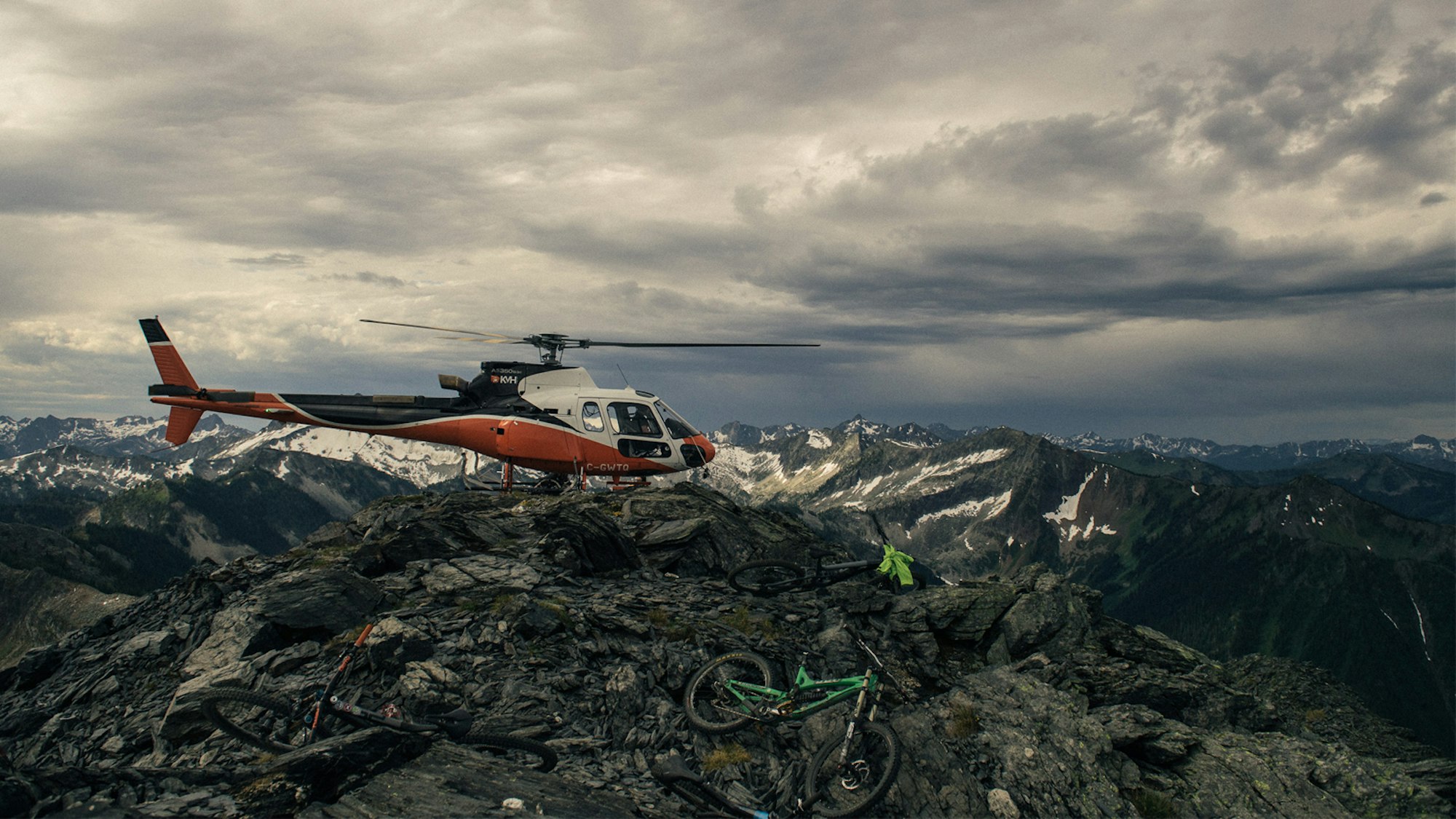
Heli-drop views of the Kootenay Range at Retallack Lodge. PHOTO: Courtesy of Retallack
Heli-biking may sound like a no-brainer to expanding a winter ski operation to summer recreation—load bikes when the snow melts and send gravity-crazed riders down the same hills on two wheels—but there are some pretty significant hurdles to heli-biking going mainstream, primarily that of land use regulations. “It’s not like skiing where you have a large area of runs to play on,” said Kinrade, “You have to get special permits to build trails, and then you have to actually build the trails. It’s not easy work.”
That’s where Whisper Ridge has an advantage—with 70,000 acres of private land, the Utah resort is in a unique situation compared to most operations who have strict seasonal permits from the National Forest. “Because we’re private, we pretty much say ‘hey, let’s build a trail here,’ and the next day we break ground. It’s kind of like living in this childhood dream where we have this massive playground to turn into a bike park,” said Harik.
While Whisper Ridge might be the latest addition to the scene, back in September of 2017, Alaska’s Tordrillo Mountain Lodge (TML) became the first operation in the United States to jump onto the heli-biking scene. “We’re all mountain bikers in the summer, so it was a pretty natural progression to look up at the mountains we ski in and say, ‘Hey, we’ve gotta find a way to bring our bikes up here,’” said Mike Overcast, Owner and Guide at TML.
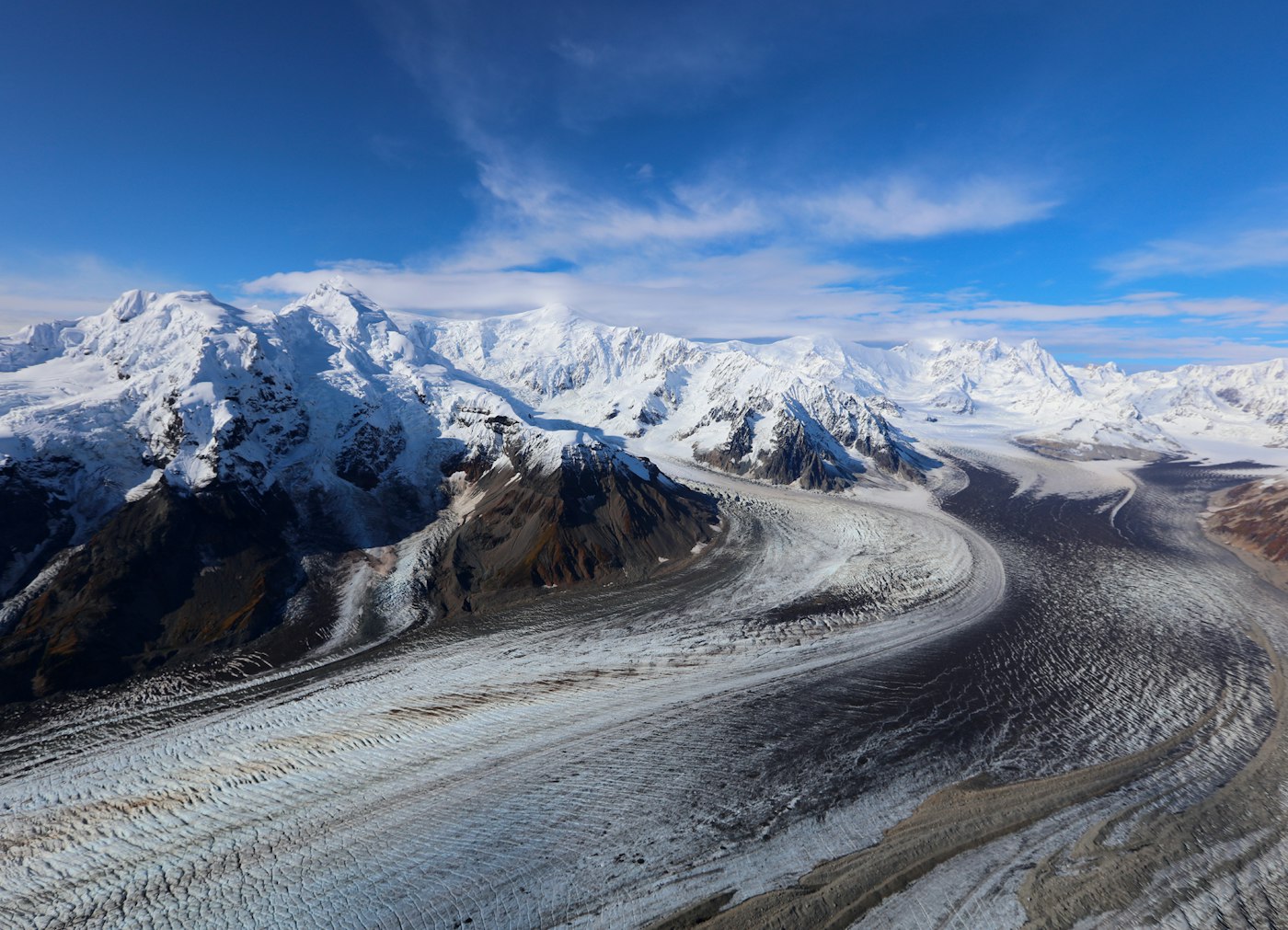
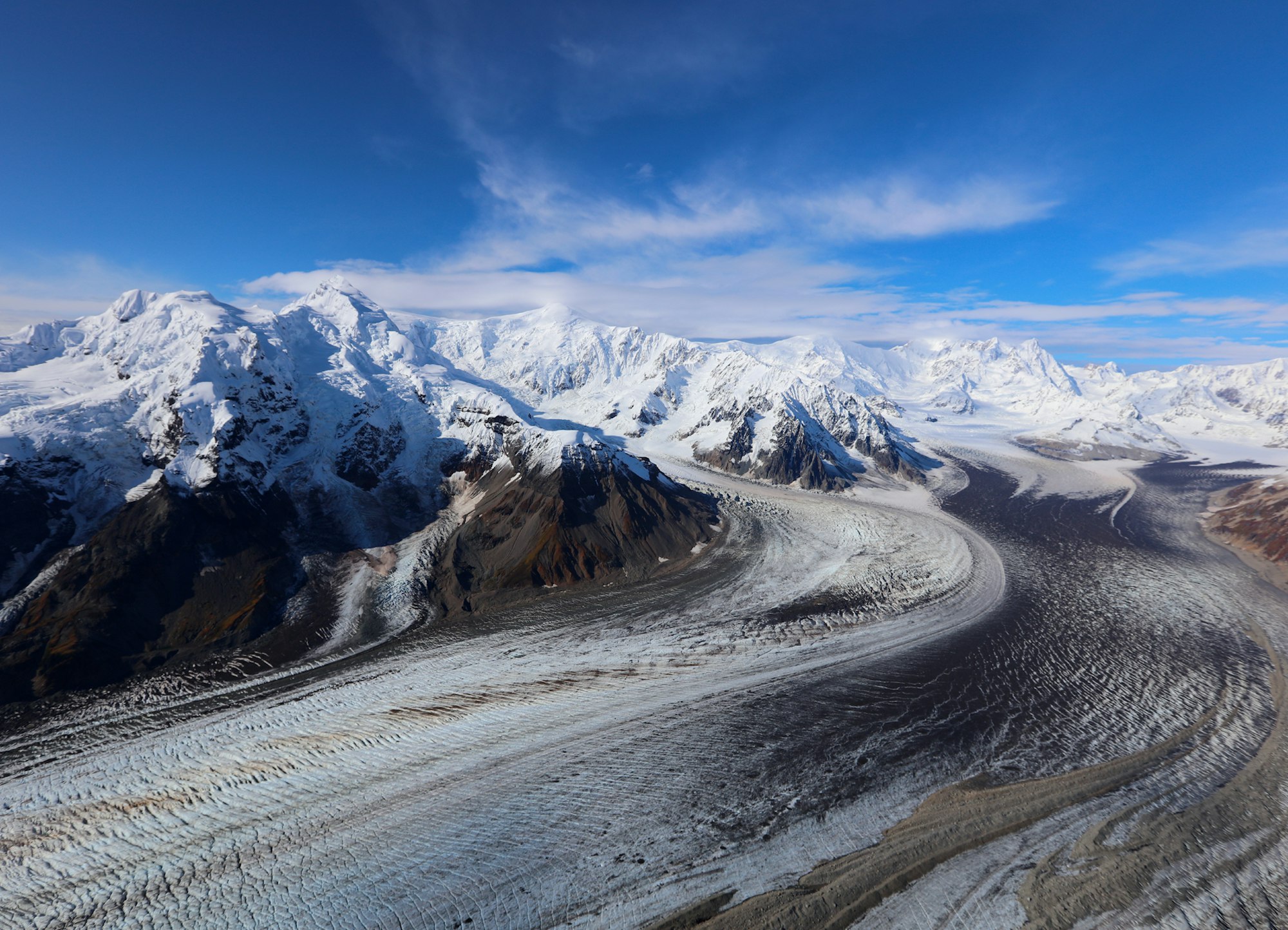
At Tordrillo Mountain Lodge, you can immerse yourself amongst stunning landscapes in winter and summer. PHOTO: Courtesy of TML
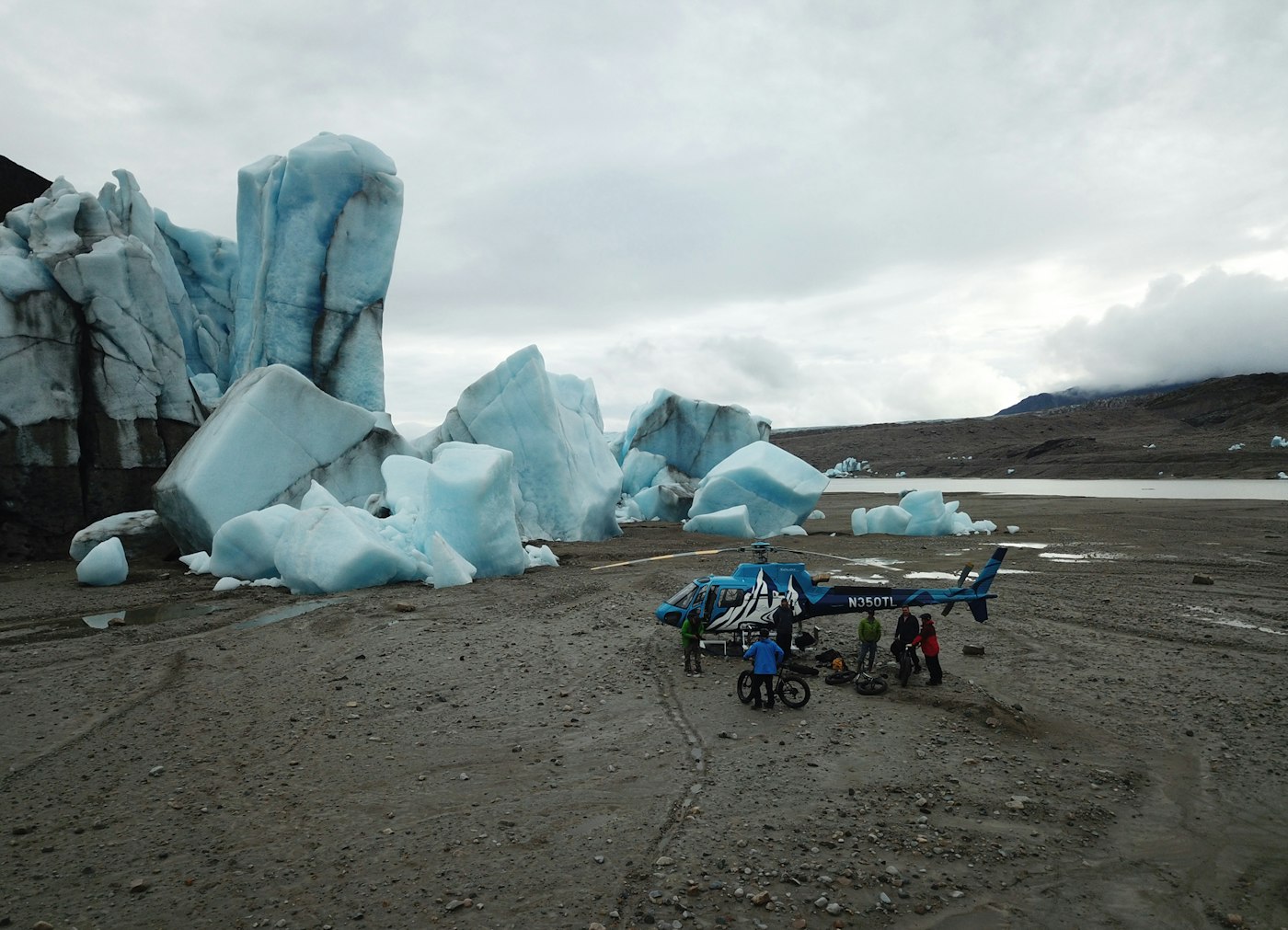
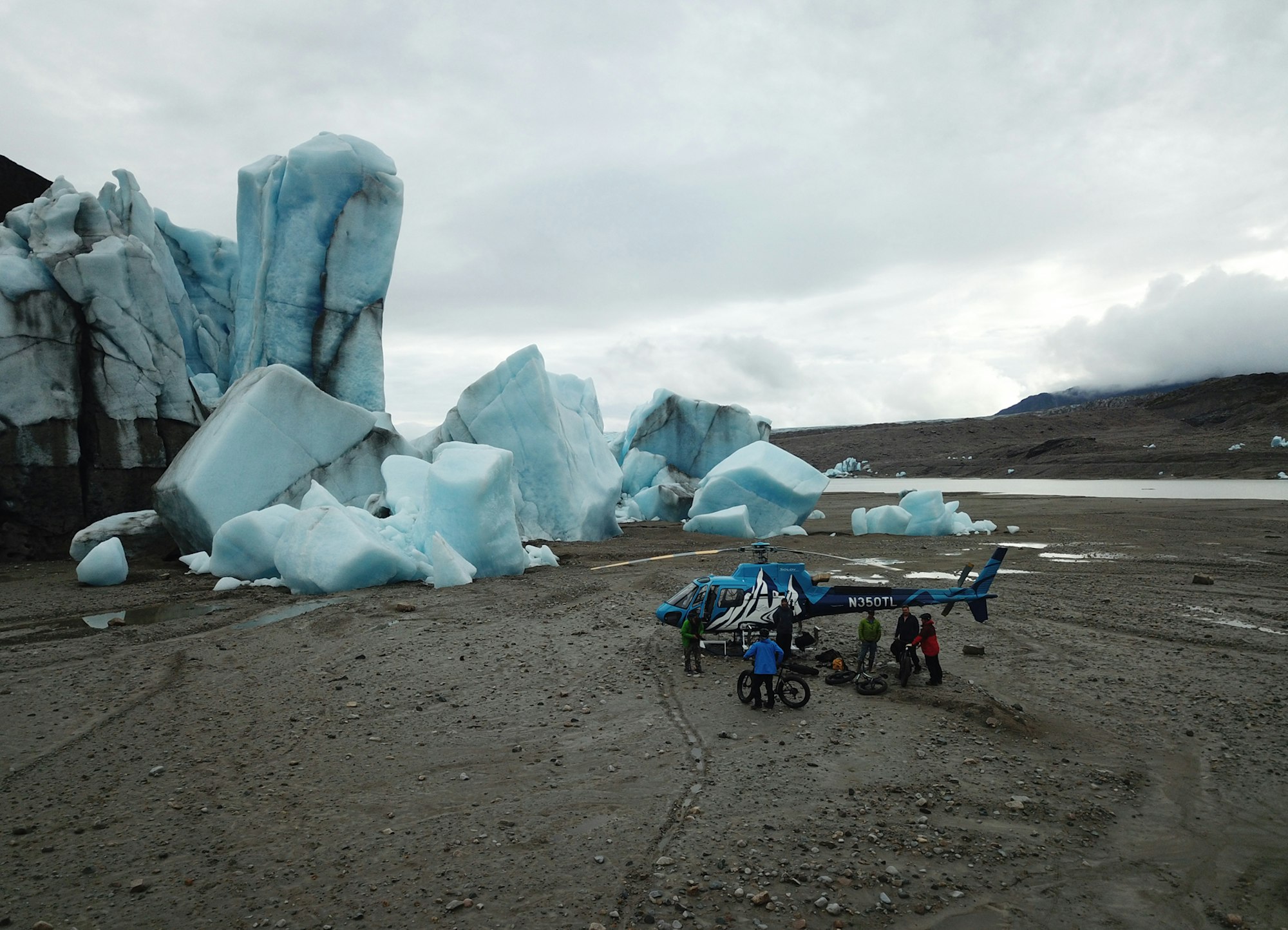
Tordrillo’s version of heli-biking might as well be a category all on its own. PHOTO: Courtesy of TML
Tordrillo’s version of heli-biking might as well be a category all on its own. After a 10-minute flight from the lodge, guests ride through glacial river beds, icebergs and down steep cones of volcanic ash on hard-tail fat bikes with 5.5-inch tires. “It’s all freeriding, so we didn’t have to get permits for trail building, just a general special use permit,” Overcast explained. “The snow comes in the winter and wipes away our tracks.”
“We’re not bothering anyone out here,” Overcast added. “Whereas in the Lower 48, other riders aren’t gonna be happy if they run into a helicopter on top of their favorite trail.”
Land regulations aside, the biggest innovation to push heli-biking into the mainstream was the work of a small Canadian aerospace company—AeroDesign—who developed an FAA-approved bike rack that can be swapped out for a ski carriage and can haul six bikes at a time. “That rack totally changed the game,” said Kinrade. “When we first got started we used to sling bikes to the top in a cage. You weren’t permitted to fly people while an external line was attached so it was super inefficient.”
A bike rack from AeroDesign can range from $6,000 to $8,000, but considering how much a helicopter costs, it’s a relatively low overhead for what it is. “When you consider how much the machine costs, a rack isn’t a huge investment,” added Kinrade.
Overcast added that heli-biking inspires their team to look at the mountains from an entirely different lens. While skiers are often comfortable skiing slopes that range from 30 to 50 degrees, that would feel downright terrifying even for advanced bikers. “Even 10 degrees feels steep on a bike—it’s a really fun way for us to open up new terrain that might not necessarily be fun to ski in the winter, but it’s a blast on a bike.”
Leaders in the industry like Overcast, Harik and Kinrade believe that at this stage, competition isn’t much of an issue, it’s important to get people out heli-biking so it becomes something that everyday riders can envision themselves doing. “It’s really exciting that other operations are getting onboard,” said Overcast. “At this point, the more the merrier.”
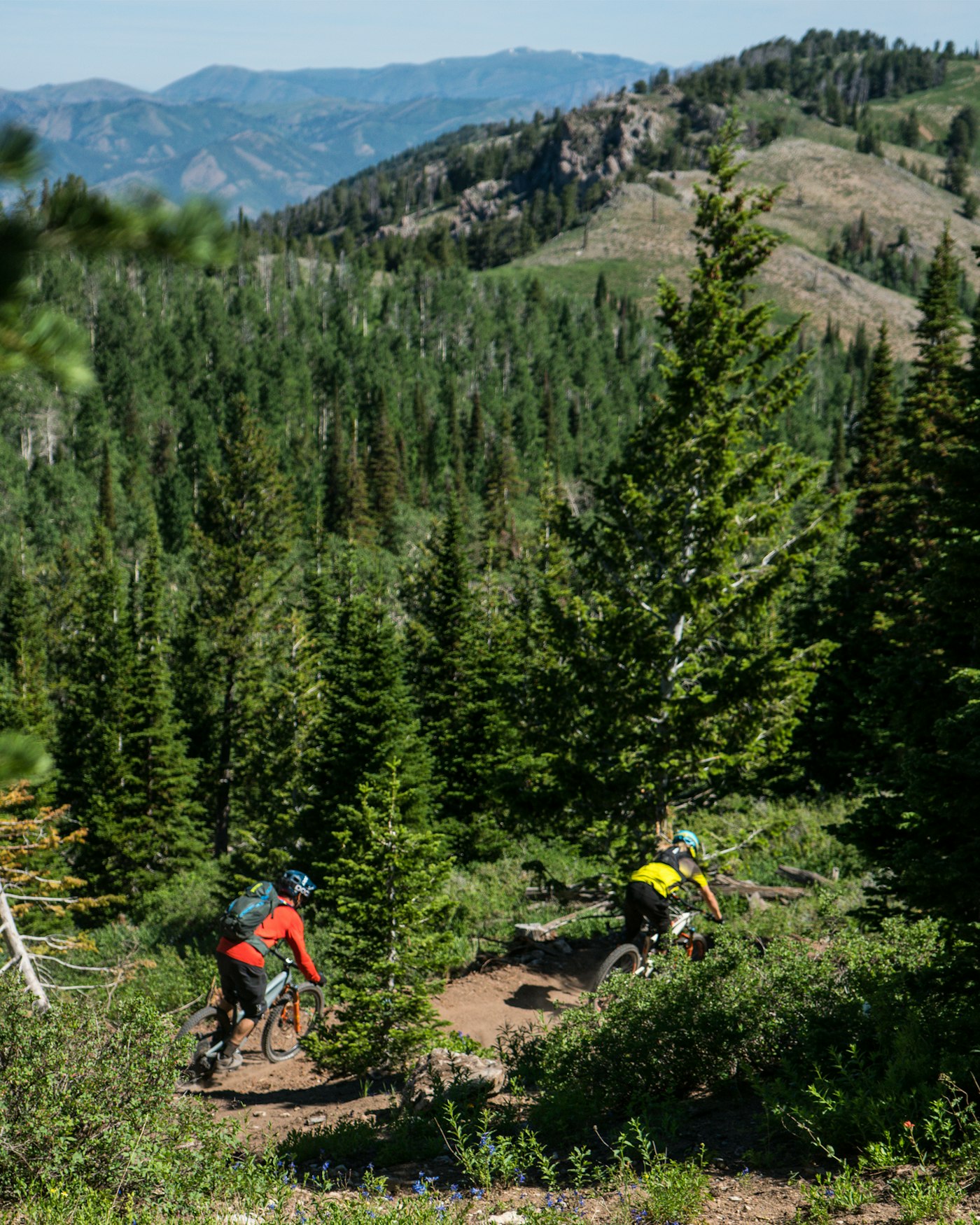
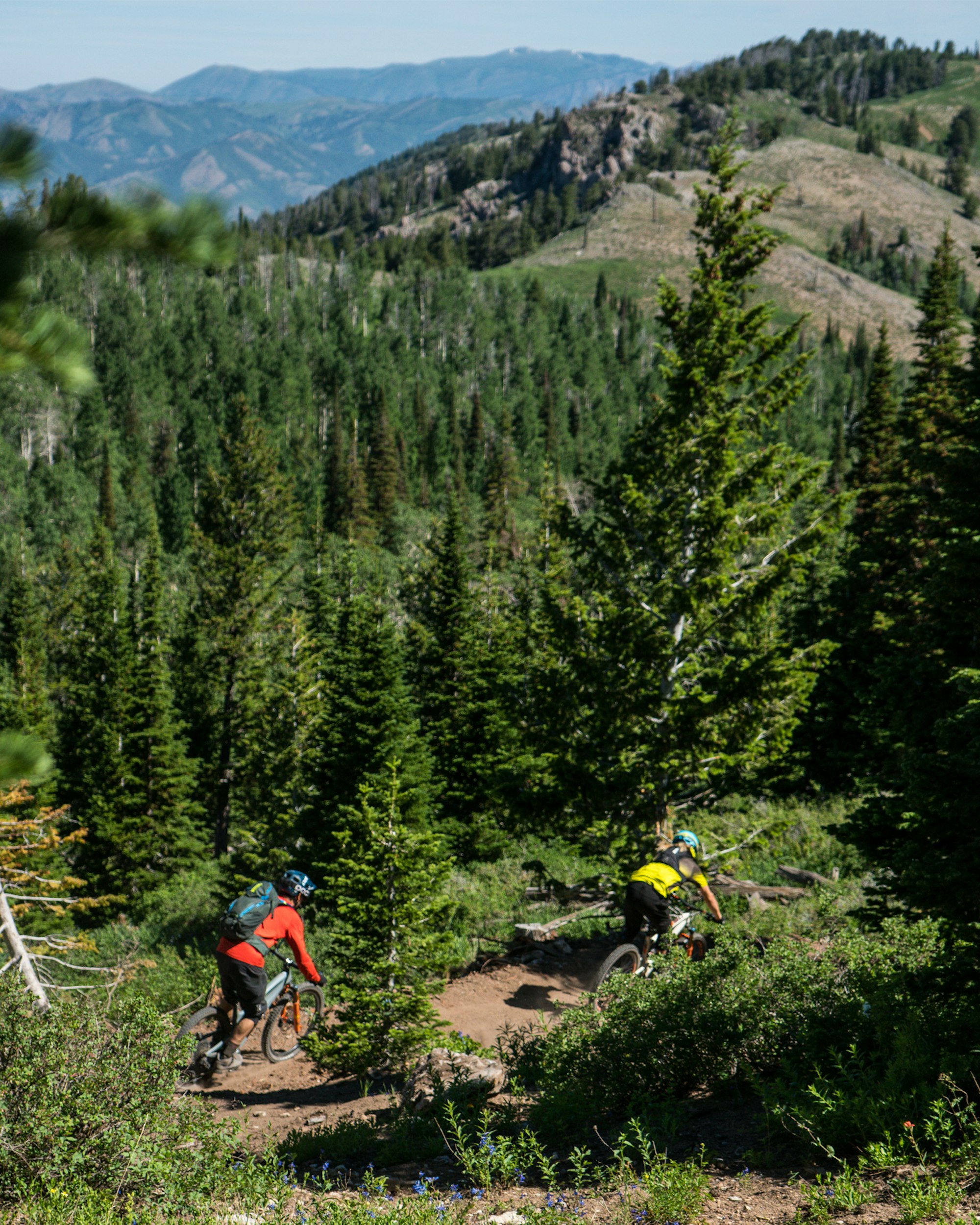
Winding through the high-alpine in Utah’s Wasatch Range.
As of July, Whisper Ridge had completed their first trail, an intermediate flow trail that will be followed by four more this season, including a beginner, intermediate and advanced trail, as well as an expert jump line. “Our eight-man trail crew has been working like crazy,” Harik said. “Even our CEO, Dan Lockwood, has been spending time in the excavator—pretty cool when the boss man won’t stop working until it gets dark.”
Back in the Wasatch, we gather our bikes and get ready to drop into Whisper Ridge’s first ever heli-accessed bike trail. Kimber, our pilot, takes off and makes a stylish, banked turn around us before disappearing into the valley below. We hop on our bikes and drop in to the freshly crafted Nirvana Trail, sinking our tires into 2,000 feet of day-old brown pow, ripping through dense forest, aspen groves and playful creekbeds before catching another ride back to the top.

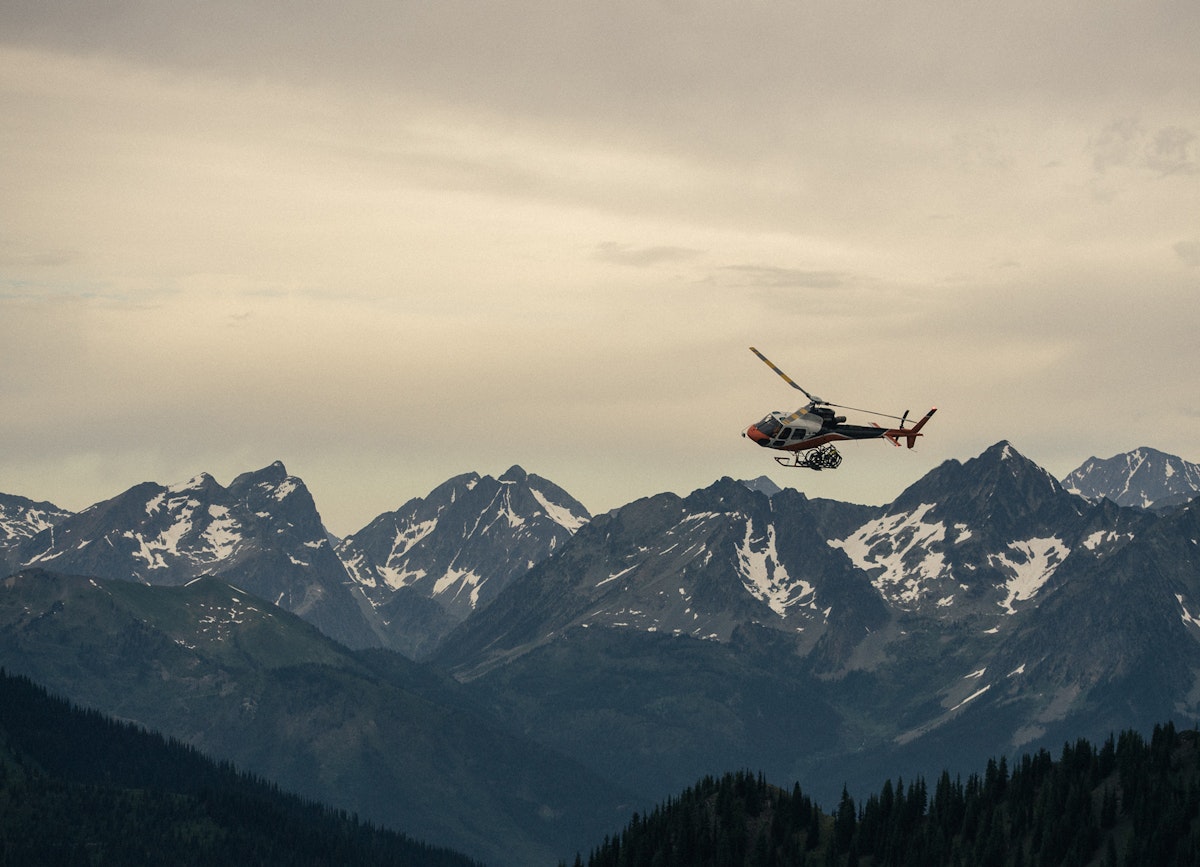


![[GIVEAWAY] Win a Head-to-Toe Ski Setup from IFSA](https://www.datocms-assets.com/163516/1765920344-ifsa.jpg?w=200&h=200&fit=crop)

![[GIVEAWAY] Win a Legendary Ski Trip with Icelantic's Road to the Rocks](https://www.datocms-assets.com/163516/1765233064-r2r26_freeskier_leaderboard1.jpg?auto=format&w=400&h=300&fit=crop&crop=faces,entropy)




![[GIVEAWAY] Win a Head-to-Toe Ski Setup from IFSA](https://www.datocms-assets.com/163516/1765920344-ifsa.jpg?auto=format&w=400&h=300&fit=crop&crop=faces,entropy)


